Commander Potluck
Hi everyone! Welcome back to The Knowledge Pool!
This week we're doing something a little different and delving into a territory this series doesn't normally cover: budget deck building. Like many of you, I've been brewing a ton of the new commanders from Commander 2018, and as a result, I've been a bit tight for cash. Considering all the price spikes that typically take place around the release of a new set, it can be easy to feel priced out of a new commander before it's even released. However, in my opinion, building on a budget offers us the opportunity to explore new cards we wouldn't otherwise consider, and it can force us to consider alternative ways of approaching the more popular commanders. (In fact, one of my favorite decks, Omnath, Locus of RageOmnath, Locus of Rage, was born under similar conditions, but that's a story for another time.)
In the case of this particular brew, I want to present to you all a "budget" deck I'm in the process of putting together. As far as budget brews go, we're cheating. As we'll soon see, the deck we're looking at today has a handful of cards that fall on the slightly more expensive side, but there's a method to my madness. Do you ever have that handful of cards that you're itching to play, but could never find the right home for? I have a growing stack of cards I've collected over the years that I've always wanted to play, but for a lot of them there's just something slightly off. Rise of the Dark RealmsRise of the Dark Realms? Seems fun, but nine mana is way too much to cast in any of my graveyard decks. Thassa, God of the SeaThassa, God of the Sea? I've approached so many brews with the intent of including Thassa, only to end up cutting her during the process of optimization.
Then I saw Yennett, Cryptic SovereignYennett, Cryptic Sovereign, and I knew she was the home I'd been looking for for many of the lost souls in my deck building box.
With this design, I'm not building a traditional "budget" deck. Instead I'm building what I call a "Commander Potluck". The concept of a Commander Potluck is simple: try to build the best deck possible only with the cards in your collection, with a preference towards "pet cards." That pile of lost souls? This is the home for them. There's a unique challenge when trying to write about a deck built in this way: my deck isn't optimal due to my design/cost restrictions, but it isn't exactly budget either. We're stuck in a bizarre middle ground where I'm demo-ing a deck that's been uniquely sculpted by my personal situation, so how is this valuable to you? Yennett is a flexible commander, and the direction I've taken the building process enables a high degree of interchangeability, allowing you to adjust it for whatever lost souls are in your collection. Today, we will be building a Yennett reanimator deck.
Let's take a step back and talk about some of the history surrounding this deck. I mentioned in my Yuriko article that I began my Magic career as a control player, and like many aspiring control players the WUB (Esper) color combination was my favorite. Another key aspect of my early Magic career was watching videos of pro-player Luis Scott Vargas (LSV), and my favorite deck to watch him pilot was Legacy Esper reanimator. For those of you unfamiliar, Legacy reanimator puts high-CMC creatures into its graveyard and resurrects them for super cheap to take over the game. It looked like a blast to play, and as I would come to find years later, it's just as fun as it looks. As a new player, I couldn't fathom building a deck like Legacy reanimator, and until recently, I had forgotten the excitement I had for the deck.

This is where Yennett comes into the picture. Yennett will let us cheat the cost of spells off the top of our deck, as long as they have an odd converted mana cost. At first glance, I was skeptical of Yennett as a commander because there was a glaring flaw with building your deck around her: if Yennet dies, how do we still win the game? We're not in green, so ramping into the big spells in our deck isn't a consistent option. My skepticism of Yennett's playability lead me to the realization that she can function as an incredible graveyard-focused commander. If we can't cast our big spells when Yennett dies, we're just going to ReanimateReanimate them instead. Luckily, there are a lot of potent reanimation spells that also synergize with Yennet, letting us seamlessly merge the two themes.
Moreover, building Yennett with a reanimation focus allows for the design flexibility I described previously. The beauty of reanimator in Commander is that the only prerequisite for the creatures in our deck is that they be big, ideally with evasion and an ability to harass our opponents. The card pool in Commander is so vast that there are an endless number of choices and combinations that can make playing a deck like this fun on any budget. My build might include the Iona, Shield of EmeriaIona, Shield of Emeria I'd left homeless in my binder, but this spot could just as easily be filled by Angel of DespairAngel of Despair, Inkwell LeviathanInkwell Leviathan, or Blazing ArchonBlazing Archon, each of which boasts a fraction of the monetary cost while synergizing with Yennett and our reanimation theme. Much like the Legacy reanimator decks that captivated me years ago, we want a diversity of abilities in our Commander decks, and there are wide variety of creatures in Commander just begging to be dredged from the deep.
Let's take a look at the decklist:
Yennet, Sovereign of the Undead
View on ArchidektCreatures (20)
- 1 Mother of RunesMother of Runes
- 1 Golgari ThugGolgari Thug
- 1 Sigiled StarfishSigiled Starfish
- 1 Burnished HartBurnished Hart
- 1 Thassa, God of the SeaThassa, God of the Sea
- 1 MulldrifterMulldrifter
- 1 Prognostic SphinxPrognostic Sphinx
- 1 Angel of SerenityAngel of Serenity
- 1 Diluvian PrimordialDiluvian Primordial
- 1 Emeria ShepherdEmeria Shepherd
- 1 Enigma SphinxEnigma Sphinx
- 1 Luminate PrimordialLuminate Primordial
- 1 Magister SphinxMagister Sphinx
- 1 Nezahal, Primal TideNezahal, Primal Tide
- 1 Rune-Scarred DemonRune-Scarred Demon
- 1 Sepulchral PrimordialSepulchral Primordial
- 1 Sphinx of UthuunSphinx of Uthuun
- 1 Artisan of KozilekArtisan of Kozilek
- 1 Iona, Shield of EmeriaIona, Shield of Emeria
- 1 Void WinnowerVoid Winnower
Artifacts (11)
- 1 Sol RingSol Ring
- 1 Azorius SignetAzorius Signet
- 1 Dimir SignetDimir Signet
- 1 Fellwar StoneFellwar Stone
- 1 Lightning GreavesLightning Greaves
- 1 Orzhov SignetOrzhov Signet
- 1 Swiftfoot BootsSwiftfoot Boots
- 1 Ashnod's AltarAshnod's Altar
- 1 Chromatic LanternChromatic Lantern
- 1 Crystal BallCrystal Ball
- 1 Gilded LotusGilded Lotus
Sorceries (16)
- 1 PonderPonder
- 1 PortentPortent
- 1 PreordainPreordain
- 1 Contingency PlanContingency Plan
- 1 Buried AliveBuried Alive
- 1 Dream CacheDream Cache
- 1 WindfallWindfall
- 1 Beacon of UnrestBeacon of Unrest
- 1 Cleansing NovaCleansing Nova
- 1 Final PartingFinal Parting
- 1 Tragic ArroganceTragic Arrogance
- 1 Unburial RitesUnburial Rites
- 1 Blatant ThieveryBlatant Thievery
- 1 Boneyard ParleyBoneyard Parley
- 1 Brilliant UltimatumBrilliant Ultimatum
- 1 Rise of the Dark RealmsRise of the Dark Realms
Instants (9)
- 1 BrainstormBrainstorm
- 1 Mystical TutorMystical Tutor
- 1 Dimir CharmDimir Charm
- 1 Telling TimeTelling Time
- 1 Anguished UnmakingAnguished Unmaking
- 1 Forbidden AlchemyForbidden Alchemy
- 1 Frantic SearchFrantic Search
- 1 Fact or FictionFact or Fiction
- 1 Mystic ConfluenceMystic Confluence
Enchantments (4)
- 1 SoothsayingSoothsaying
- 1 Haunted CrossroadsHaunted Crossroads
- 1 NecromancyNecromancy
- 1 Mind's DilationMind's Dilation
Planeswalkers (1)
- 1 Liliana VessLiliana Vess
Lands (38)
- 1 Arcane SanctumArcane Sanctum
- 1 Choked EstuaryChoked Estuary
- 1 Command TowerCommand Tower
- 1 Drowned CatacombDrowned Catacomb
- 1 Evolving WildsEvolving Wilds
- 1 Geier Reach SanitariumGeier Reach Sanitarium
- 1 Glacial FortressGlacial Fortress
- 1 Halimar DepthsHalimar Depths
- 1 High MarketHigh Market
- 8 IslandIsland
- 1 Isolated ChapelIsolated Chapel
- 1 Maze of IthMaze of Ith
- 1 Morphic PoolMorphic Pool
- 1 Nephalia DrownyardNephalia Drownyard
- 4 PlainsPlains
- 1 Port TownPort Town
- 1 Prairie StreamPrairie Stream
- 1 Sea of CloudsSea of Clouds
- 1 Sunken HollowSunken Hollow
- 5 SwampSwamp
- 1 Temple of DeceitTemple of Deceit
- 1 Temple of EnlightenmentTemple of Enlightenment
- 1 Temple of SilenceTemple of Silence
- 1 Terramorphic ExpanseTerramorphic Expanse
A Quizzical Curve
There's a few things about this list that should jump out right away. We're working with a rather high curve, with an average CMC of 4.23. This shouldn't be unexpected, given the themes of our deck. As long as our work in the early game allows us to fill up our graveyard, fix our mana, and ramp into Yennett, we'll rarely every be playing our spells for full price. However, there's also another unique aspect of our curve worth addressing, and it can be best summed up with the following image.
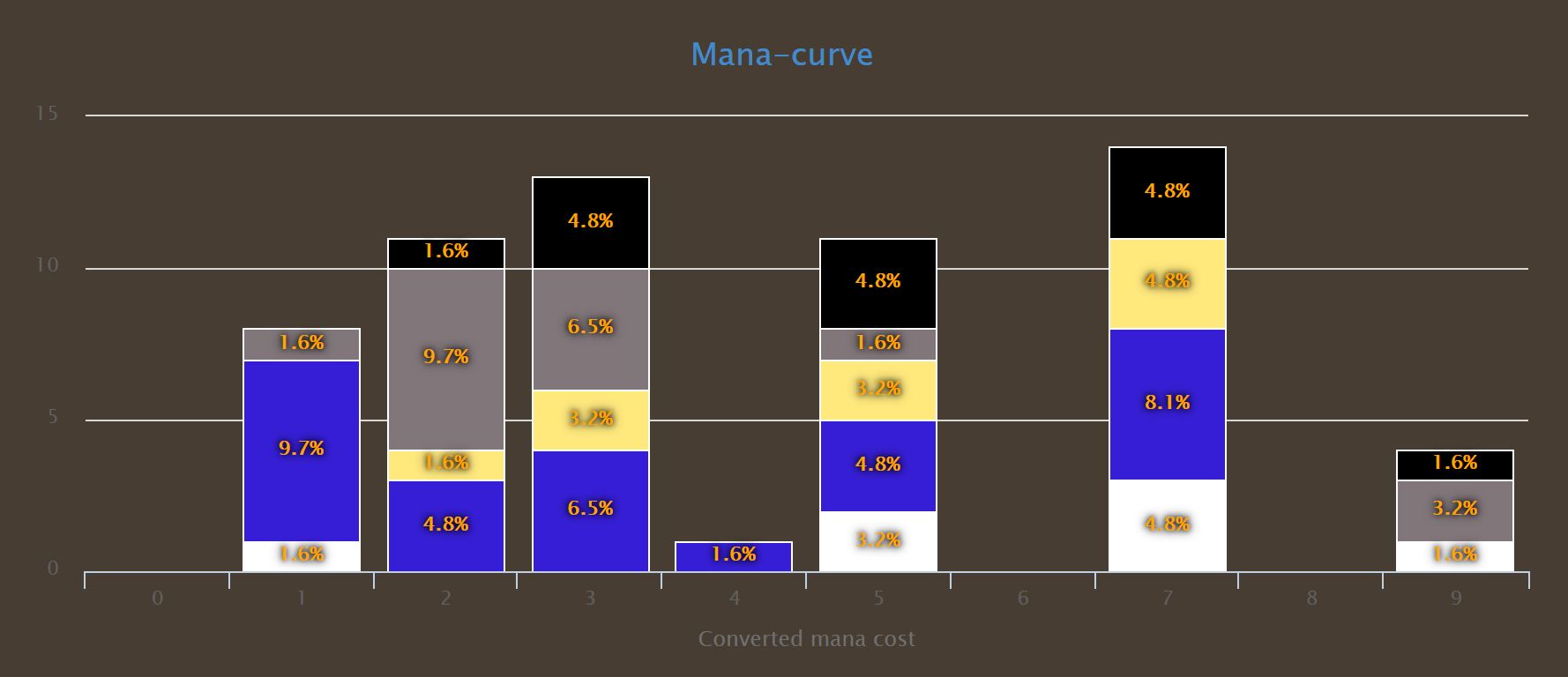
This may be the first and only deck I ever build that includes one 4-drop and no 6-drops. For most decks, especially those with reanimator strategies, there are a lot of potentially good targets in the 4 and 6 spots. However, given that we want to have the best chance of success with each Yennett trigger, with as little work as possible, I decided to skew very heavily in favor of odd casting costs.
I also want to talk about the cost of this deck a little bit. This deck comes in at about $205 if ordered it from TCGplayer. Everybody has a different interpretation of what constitutes a "budget" deck, but I imagine that $200 is on the higher end for most people. After we break down the choices for the cards in the deck, I will offer some alternative choices to some of the more expensive cards in the deck, and, luckily, most of them have budget analogues.
The first element I want to address with this deck are the targets for Yennett and our reanimation spells. We want these spells and creatures to give us the best chance to close out a game, and with these in mind we'll be able to better appreciate the supporting cast that allows us to cheat them into play.
From the Infinite
The Top End
View on ArchidektCreatures (14)
- 1 Prognostic SphinxPrognostic Sphinx
- 1 Angel of SerenityAngel of Serenity
- 1 Diluvian PrimordialDiluvian Primordial
- 1 Emeria ShepherdEmeria Shepherd
- 1 Enigma SphinxEnigma Sphinx
- 1 Luminate PrimordialLuminate Primordial
- 1 Magister SphinxMagister Sphinx
- 1 Nezahal, Primal TideNezahal, Primal Tide
- 1 Rune-Scarred DemonRune-Scarred Demon
- 1 Sepulchral PrimordialSepulchral Primordial
- 1 Sphinx of UthuunSphinx of Uthuun
- 1 Artisan of KozilekArtisan of Kozilek
- 1 Iona, Shield of EmeriaIona, Shield of Emeria
- 1 Void WinnowerVoid Winnower
Enchantments (1)
- 1 Mind's DilationMind's Dilation
Sorceries (4)
- 1 Blatant ThieveryBlatant Thievery
- 1 Boneyard ParleyBoneyard Parley
- 1 Brilliant UltimatumBrilliant Ultimatum
- 1 Rise of the Dark RealmsRise of the Dark Realms
This deck has 14 big creatures for us to cheat into play, and serve as our primary win condition. Most of these have some form of evasion, and should present a rather swift clock if our opponents aren't quick about removing them. The best part? Even if any of these are swept up in a Wrath, they then become prime reanimation targets. Our dudes will never be gone for long. Let's take a look at what some of these creatures bring to the table.
Angel of SerenityAngel of Serenity has always been a favorite of mine, and since its original printing, it has been a staple reanimation target. Angel of Serenity will remove three of the best creatures on the battlefield, or else it will strip away important creatures in another graveyard. The important element here is that when Angel of Serenity leaves the battlefield, she returns the exiled creatures to their owner's hands, so even if she's killed, our opponents will be forced to recast their creatures.

The Primordial cycle (Diluvian PrimordialDiluvian Primordial, Sepulchral PrimordialSepulchral Primordial, and Luminate PrimordialLuminate Primordial) present us with three unique abilities that have the potential to be game-changing. The effectiveness of Diluvian and Sepulchral is highly dependent on the decks our opponents are bringing to the table, but in a four player game they will rarely miss entirely. For both of these, the floor is a large evasive creature, while the ceiling involves us stealing cards like Boundless RealmsBoundless Realms and Ulamog, the Ceaseless HungerUlamog, the Ceaseless Hunger. Luminate is effectively a removal spell, but the potential to exile three creatures is a lot of value and will change the landscape of the battlefield.

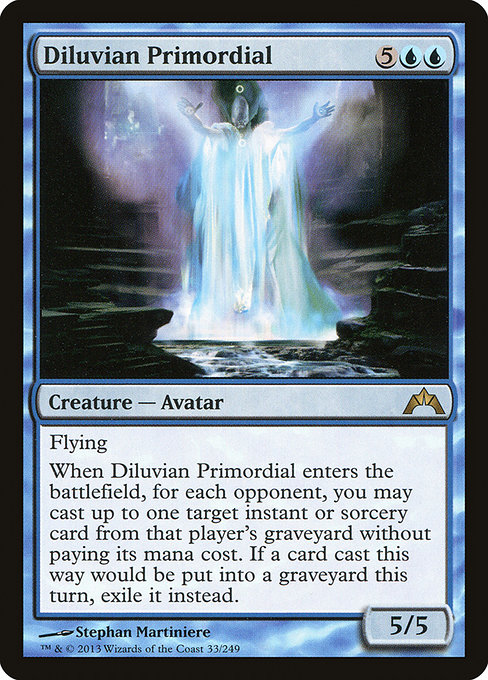

Nezahal, Primal TideNezahal, Primal Tide is quickly becoming one of my favorite creatures in Commander. Our opponents cant counter him, he's huge, he lets us draw tons of cards, and then he protects himself if our opponents try to remove him. That's a resilient threat. In this deck he also offers us the ability to dump any creatures directly into the graveyard so that we can reanimate them. Get Nezahal while he's still cheap.
An important distinction is that Yennett allows us to cast the cards she reveals from our decks. In most cases this doesn't make a difference to us, but in the case of Artisan of KozilekArtisan of Kozilek it means we get to use the cast trigger to reanimate a creature. This makes Artisan a perfect fit for every mode this deck has: it's big, it's a Yennett target, and it rescues our other creatures from the underworld.
Perhaps the most flavorful Yennett target our deck has is Void WinnowerVoid Winnower. Yennett cares about odd CMC spells, and Winnower is the harbinger of even-costed genocide. The value you get from Winnower will vary, although it's probably safe to assume that it effectively turns off about half of your opponent's decks. Worst case, not many creatures want to tangle with an 11/9, so Winnower should be putting a lot of pressure on your opponents.
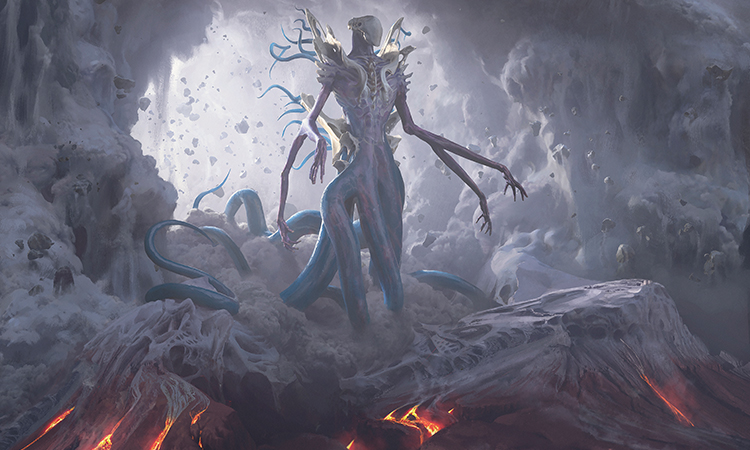
The last creature I briefly want to mention is Iona, Shield of EmeriaIona, Shield of Emeria. Iona is one of the pricier cards in this deck, and admittedly she's one of the easiest cards to cut in favor of other options. A lot of Commander players HATE playing against Iona, as she represents one of the cardinal sins of the format: revoking your opponent's ability to play the game. For me, Iona is exclusively a win condition. I don't plan to reanimate her early game or mid-game, and I will probably only play her when she represents a game-ending change of tempo. This declaration becomes more challenging to uphold when we reveal her off of Yennett, but in a lot of cases we can manipulate the top of our deck so that we will only see Iona when we want to. It's also worth noting that as soon as your opponents are aware that you're close to attaining Iona - for instance, when she gets dredged into your graveyard - be prepared to face down a lot of heat aimed in your direction. In the words of Spiderman's Uncle Ben, "with great power comes great responsibility," which for our purposes translates to: "don't be a jerk with your Iona."
Outside of creatures, Yennett also lets us play our odd-costed spells for free, and there are some big ones that we're hoping to hit.
Blatant ThieveryBlatant Thievery will let us steal three permanents in a four player game. At worst, this translates into seven mana for three lands, but in a lot of cases we'll be taking more impactful permanents as well. I've seen games where Thievery wins the game on the spot, so it seems like a necessary inclusion.
Boneyard ParleyBoneyard Parley is our fixed version of Living DeathLiving Death, and it ensures that we end up with all the value in the end. Given that we'll be dumping a lot of our own giant creatures in the yard, there should almost always be a bounty of options for us to reanimate, but if we're lucky we may even get to steal a Sheoldred, Whispering OneSheoldred, Whispering One or Elesh Norn, Grand CenobiteElesh Norn, Grand Cenobite to add to our army.
Finally, Rise From the Dark RealmsRise From the Dark Realms is the ultimate reanimation spell in MTG. Late into most games, putting all creatures from all graveyards onto the battlefield under our control will be game winning, and the prospect of having this ability for free off of Yennett is too good to pass up. I've never had the chance to cast this card before, but I'm hoping that I will in the near future.

Top Deck Sculpting
Now that we have an idea of the kinds of spells we hope to be casting with Yennett, we need to have way to get them to the top of our deck. While our version won't have access to archetype staples like Scroll RackScroll Rack and Sensei's Divining TopSensei's Divining Top, we still have a lot of good options to succeed in this area. Let's take a look.
Brainstorming
View on Archidekt- 1 BrainstormBrainstorm
- 1 PonderPonder
- 1 PortentPortent
- 1 PreordainPreordain
- 1 SoothsayingSoothsaying
- 1 Contingency PlanContingency Plan
- 1 Dimir CharmDimir Charm
- 1 Golgari ThugGolgari Thug
- 1 Sigiled StarfishSigiled Starfish
- 1 Telling TimeTelling Time
- 1 Crystal BallCrystal Ball
- 1 Dream CacheDream Cache
- 1 Haunted CrossroadsHaunted Crossroads
- 1 Thassa, God of the SeaThassa, God of the Sea
- 1 Prognostic SphinxPrognostic Sphinx
A lot of these cards are probably familiar to you, like BrainstormBrainstorm, PonderPonder, and PreordainPreordain. The extra utility we get from using these to stack our deck shouldn't be underestimated.
I also wanted to choose cards that would let us hit both our Yennett and reanimation themes at the same time. Dimir CharmDimir Charm, Telling TimeTelling Time, and Contingency PlanContingency Plan let us set up our top deck, while dumping a handful of cards into the graveyard. Golgari ThugGolgari Thug and Haunted CrossroadsHaunted Crossroads also hit on both themes, with Thug helping to stock our yard, and both letting us put fatties from our grave on top of our deck. While not technically reanimation spells, Thug and Crossroads will often function just like a reanimation spell when we have Yennett on board.
Another way we can set up the top of our deck is through the scry mechanic, and we have a handful of ways to consistently scry. Sigiled StarfishSigiled Starfish, Crystal BallCrystal Ball, and Thassa, God of the SeaThassa, God of the Sea each provide us scrys on each of our turns. Thassa's scry ability happens during the upkeep, so it doesn't synergize as well with Yennett, but filtering away bad draws while offering Yennett unblockability makes Thassa a solid inclusion. Prognostic SphinxPrognostic Sphinx is able to protect itself, and will grant us a hefty scry when it attacks. SoothsayingSoothsaying isn't scrying in the traditional sense, but for our purposes, the ability to stack the deck as many times as we want is equally powerful.

Two other options we have for stacking our deck come in the form of tutors. Mystical TutorMystical Tutor will help us to find whichever giant instant or sorcery is most relevant, right before we swing with Yennett. Our other option is Liliana VessLiliana Vess. Liliana will let us find any card and put it on top of our deck, and she can do this twice before we even have to activate her +1 ability. Liliana also has the added bonus of being a 5-drop, so we can cast her with Yennett, and if we can ever reach her ultimate, she offers us another version of Rise From the Dark RealmsRise From the Dark Realms.
Even with all this top deck manipulation, we will still probably be in search of additional forms of card draw, and ways of dumping cards into our graveyard. Let's take a look at what options we have on those fronts.
Draw & Dredge
Draw and Dredge
View on Archidekt- 1 Forbidden AlchemyForbidden Alchemy
- 1 Frantic SearchFrantic Search
- 1 WindfallWindfall
- 1 Fact or FictionFact or Fiction
- 1 MulldrifterMulldrifter
- 1 Mystic ConfluenceMystic Confluence
- 1 Nezahal, Primal TideNezahal, Primal Tide
- 1 Sphinx of UthuunSphinx of Uthuun
- 1 Buried AliveBuried Alive
- 1 Final PartingFinal Parting
I tried to choose draw spells that would allow us to fill our grave as we filled our hand.
Of these, Fact or FictionFact or Fiction will be our best draw spell in most cases. We will always come out on top casting this card, dumping creatures if we have the ability to reanimate them, or else adding them to hand if we have a way to stack them for Yennett.
Forbidden AlchemyForbidden Alchemy will let us dig deep to find whatever type of spell we need, and the ability to Flashback Alchemy is added utility in the late game.

16x20 Acrylic and oil on masonite
WindfallWindfall is a variable Wheel of FortuneWheel of Fortune, but in most cases we'll be able to draw 5-7 cards with it. This can be a complete reload if we're low on cards, or else let us reset if we don't have what we need.
The last two cards I want to highlight are more tutors. Buried AliveBuried Alive will set up our grave with whatever bodies we need. Final PartingFinal Parting has a similar utility, while also letting us add something to hand.
Having explored the big creatures and spells, the top deck manipulation, and the dredge effects, we can take a closer look at the budget breakdown for this deck, and what cards could be added or subtracted to fit your needs.
Breaking Down the Budget
Cards $5-$20
View on Archidekt- 1 Maze of IthMaze of Ith
- 1 Morphic PoolMorphic Pool
- 1 Sea of CloudsSea of Clouds
- 1 Mystical TutorMystical Tutor
- 1 Golgari ThugGolgari Thug
- 1 Chromatic LanternChromatic Lantern
- 1 NecromancyNecromancy
- 1 Thassa, God of the SeaThassa, God of the Sea
- 1 Liliana VessLiliana Vess
- 1 Iona, Shield of EmeriaIona, Shield of Emeria
- 1 Rise of the Dark RealmsRise of the Dark Realms
These 11 cards are the most expensive inclusions in the deck, and of these, many can easily be swapped for cheaper alternatives.
Maze of IthMaze of Ith is included in this deck to save Yennett from combat damage while allowing us to benefit from her attack trigger. Another option that could easily fill this space is Rogue's PassageRogue's Passage. With a little extra mana investment, Passage will ensure that Yennett makes it through combat unblocked. I would also like to point out that given Yennett's natural evasion, it's possible that we don't even need a utility land to keep her safe in combat. If your meta is a safe haven for flyers, swap Maze of Ith for a basic land and call it a day.
Golgari ThugGolgari Thug can be swapped with another dredge card like Stinkweed ImpStinkweed Imp. While we will miss out on the ability to stack our deck, Imp can deter our opponents from attacking us, can be cast with Yennett, and dredges for an additional card.
Chromatic LanternChromatic Lantern could be swapped for Darksteel IngotDarksteel Ingot or Commander SphereCommander Sphere. We can't replace the fixing that Lantern provides, but I think in most cases the budget dual lands available to Esper will be enough to carry the weight.
In my opinion, tutor effects are rarely a necessity in Commander, and while Mystical TutorMystical Tutor and Liliana VessLiliana Vess will surely enable some explosive plays, they could easily be replaced with more draw spells or redundancy.

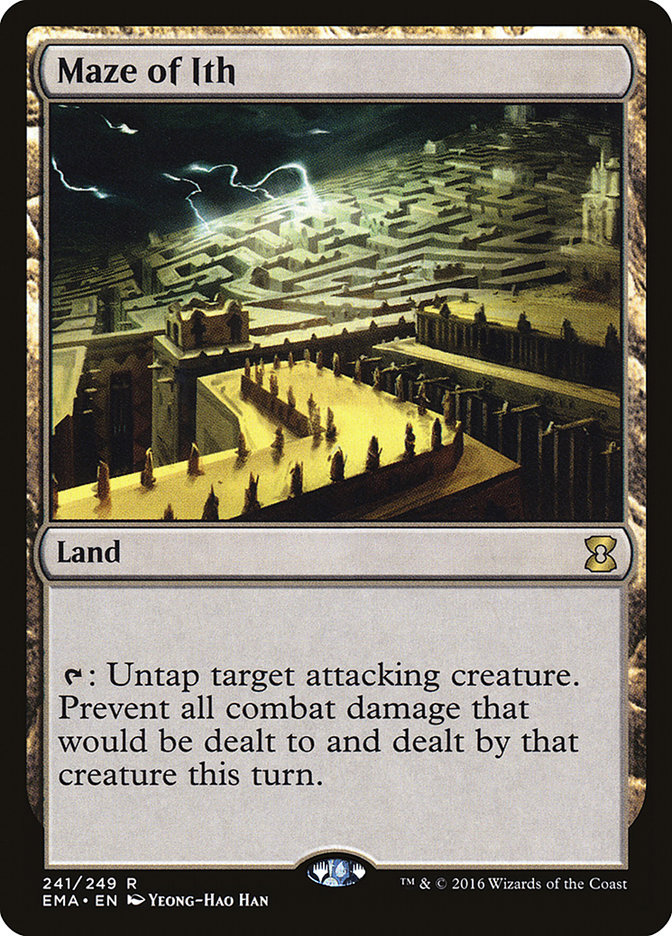
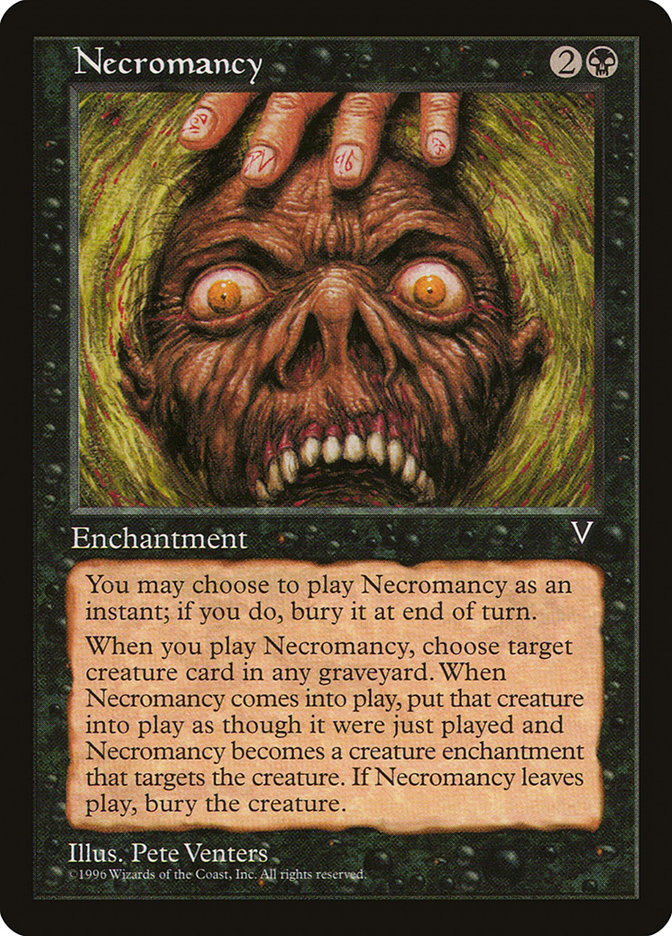
I'm disappointment that NecromancyNecromancy has crept towards $10. If you increase the creature count of this deck, VictimizeVictimize is an easy swap, and will do more damage anyway. However, if you stick to a design more similar to mine, Animate DeadAnimate Dead can be found for around $2-3, and should function similarly. Animate Dead misses out on the synergy with Yennett, but it shouldn't be too noticeable.
Thassa, God of the SeaThassa, God of the Sea is arguable unnecessary in this deck. The scry every turn is useful, as is the unblockability, but neither ability will make or break this deck's ability to function. We could replace this card with something like Seer's LanternSeer's Lantern to still have an option for scrying, while also ramping more.
For any of the dual lands in the deck, there are more budget options. About 1/4 of the cost of this deck is the manabase, when realistically you could be playing tapped dual lands. It would also be reasonable to replace the more expensive duals with basic lands, we just have to be careful as our consistency will fall the more duals we remove.
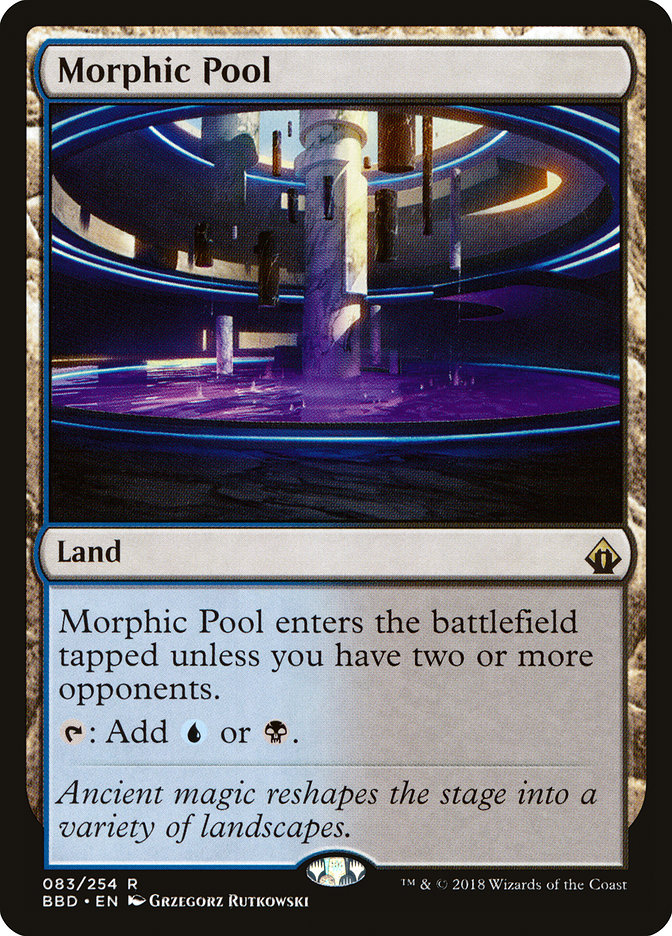
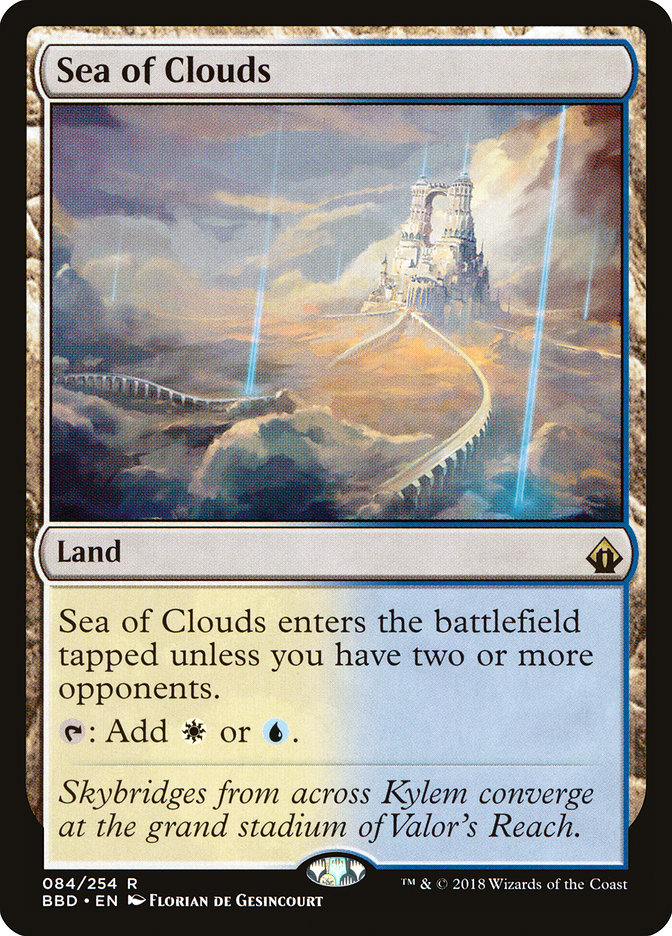
Lastly, there are a handful of cards in this deck that fall into the $2-5 range. I don't believe there are any cards in this deck, barring Yennett herself, that couldn't also be replaced to aim for a lower budget. My primary advice in doing so is to swap cards function for function. Looking to remove Mystic ConfluenceMystic Confluence? Add in Jace's IngenuityJace's Ingenuity for more draw, or CounterspellCounterspell if you fear you'll need the protection. Can't find a Mother of RunesMother of Runes? Try Whispersilk CloakWhispersilk Cloak to achieve the same protection and unblockability.
Wrapping Up
Typically, I have a section in my articles to outline the cards that narrowly missed the cut in my list, or else cards that I would like to try out at some point. However, do to the flexibility in this design and the "Potluck" format I used for my card pool, I think a list of cuts is less useful here.
I would like to point out that I considered In Garruk's WakeIn Garruk's Wake and Plague WindPlague Wind, but I was concerned with my ability to cast them without Yennett's assistance. For this reason I swapped in Cleansing NovaCleansing Nova and Tragic ArroganceTragic Arrogance. Both of these white Wraths can be cast with Yennett, and Arrogance in particular can be chosen such that it misses our commander.
The flexibility of design I've tried to showcase here is why I decided to present this list as is. I considered either presenting a fully budget deck, or a fully optimized list, but I thought it would be more interesting to show how I might build the deck with the resources on hand. If you like this format, let me know, and I might try it again in the future.
For now, I hope that I've encouraged you to give Yennett a shot, and to consider the unique directions you can take when building these new commanders.
If you liked this article, and the way I approach deck building by function, follow me @theKnowledgePL.
Until next time, I wish you all the best, and happy brewing!
Scot Sutton
I'm a Timmy that loves Green, Creatures, and Lands. I prefer controlled smashing, and best associate with the Temur colors. I've been playing commander since 2012, and I spend my free time brewing decks and exploring new strategies. I'm also a sports nut, and follow baseball, football, hockey, and soccer in detail.
Your opinions are welcome. We love hearing what you think about Magic! We ask that you are always respectful when commenting. Please keep in mind how your comments could be interpreted by others. Personal attacks on our writers or other commenters will not be tolerated. Your comments may be removed if your language could be interpreted as aggressive or disrespectful. You may also be banned from writing further comments.
